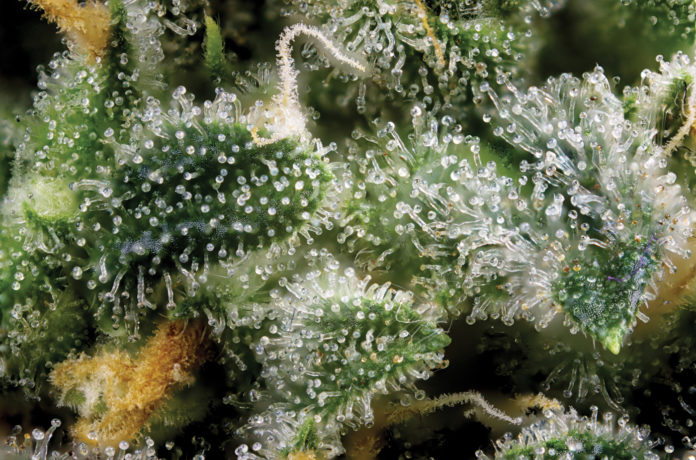The cannabis industry is growing more sophisticated by the day, with both cultivators and consumers paying closer attention to the subtleties that define a premium product. One of the most sought-after qualities in cannabis is its terpene profile—those aromatic compounds that give each strain its unique smell, flavor, and, often, nuanced effects. As demand for terpene-rich cannabis rises, many growers are exploring natural ways to enhance these profiles. But while enhancing terpene profiles has become a key goal, it’s essential to remember that terpenes are just one part of the plant’s broader chemical and environmental synergy.
The role of soil microbiomes in terpene production
A plant’s relationship with the soil beneath it is far from one-sided. Cannabis plants rely on an intricate ecosystem of soil-dwelling microorganisms to access the nutrients they need for healthy growth. This community, known as the soil microbiome, consists of beneficial bacteria, fungi, and other microbes that work symbiotically with plant roots. Not only does this relationship promote overall plant health, but it also appears to influence terpene synthesis.
Cannabis relies on these microbes to access essential nutrients and develop defense mechanisms. In return, plants release carbohydrates and other organic compounds that feed the microbes—a mutually beneficial exchange that can enrich terpene production. The presence of a well-balanced, diverse soil microbiome has been shown to increase terpene concentrations, as microbes stimulate secondary metabolite production, giving rise to richer, more complex aromatic profiles.
Techniques to cultivate beneficial microbial communities
For growers aiming to enhance the plant’s profile, the first step is creating a supportive environment for beneficial microbes.
Microbial inoculation
Microbial inoculation is the process of introducing beneficial bacteria and fungi into the soil, specifically chosen to boost plant health. Inoculants are designed to complement natural soil microorganisms, adding strains like mycorrhizal fungi and nitrogen-fixing bacteria that bolster root strength, nutrient absorption, and overall plant resilience. Studies suggest inoculated cannabis plants often yield higher levels of terpenes and cannabinoids, enhancing both quality and yield.
By introducing inoculants like Bacillus and Trichoderma species, cultivators can increase the bioavailability of key nutrients like phosphorus and nitrogen, which are crucial for metabolite synthesis. For example, mycorrhizal fungi form symbiotic relationships with plant roots, extending their reach and increasing nutrient absorption, which might ultimately enrich terpene profiles.
Organic soil amendments
Amending soil with organic materials like compost, worm castings, and bat guano not only feeds the plant but also nurtures the microbial community. These amendments introduce additional organic matter that promotes microbial diversity, helping to maintain a healthy and active soil environment.
For example, worm castings are rich in nutrients, beneficial microbes, and enzymes that break down organic matter, making nutrients more readily available to plants. Using them can lead to improved nutrient cycling and higher microbial activity, both of which positively influence terpene production.
Composting and mulching
Composting and mulching allow organic material to decompose slowly, providing a steady release of nutrients over time and maintaining moisture levels. This helps build a rich microbial ecosystem that can enhance terpene production. Mulching with materials like hay or leaves creates a moisture-retaining barrier that supports microbial life, which in turn helps break down organic matter into forms the plant can use.
Biodiverse geology
For Vermont outdoor grower Sarah Farnsworth, the best way to boost and diversify terpene profiles is to work with the geology available to you.
“Outdoor growing is unique because of its access to geology,” Farnsworth said. “Here in Vermont, we have a lot of glacial deposits all over, and incredible amounts of granite, marble slate and limestone we’re all growing on. Groundwater is flowing through all of that, and it’s perfect for growing some of the highest terpene content weed in the country.”
Farnsworth says Vermont growers tend to be stewards of the land, and they’re dedicated to creating really diverse environments because it’s what’s best for both the planet and for growing things in general.
“The biodiversity of an outdoor ecosystem is what overall influences terpenes; it’s not just this plant in a bucket in this sterile system,” Farnsworth said. “It’s part of a living environment. The insects are able to cross-pollinate, and all of these minute differences in the ecosystem contribute to the variety of plant expression. It’s all interconnected, rather than something you can magically get from a bottle.”
Checking the clock
For Alpenglow Farms founders Craig and Melanie Johnson, successfully boosting terpenes is all about the timing. Their farm is located on a mountain ridge above the confluence of two rivers, eleven miles from the Pacific Ocean in Southern Humboldt. This provides a climate they consider essential for terpene-rich flowers, but in their opinion, hasty harvesting is the enemy of these volatile compounds.
“We preserve terpenes by harvesting at 4 a.m. and ceasing when the heat of the sun starts to warm the resin,” Johnson said. “From there, we handle the flowers with tremendous TLC. Think of the trichomes like ripe cherry tomatoes ready to pop. ‘Don’t bruise the fruit!’ Melanie always tells me. This is true whether you are harvesting for flower or fresh-frozen. She [cannabis] is an amazing plant, and it’s up to the farmer to allow her to reach her full expression.”
Kevin Jodrey’s expert checklist
While the above methods might enhance plant terpene profiles via boosted microbiomes, the ultimate tip from master cultivator Kevin Jodrey is to always keep the full picture in mind.
“You can go a couple different routes for terpene production, but you also have to keep in mind that there are all of these other types of aroma categories present, and if we change one of those by part per billion, we can influence the entire aroma profile dramatically,” Jodrey said.
Jodrey recommends the following steps for success in the grow room:
- Select your cultivar carefully.
- Make sure the plant you’re selecting came from an environment similar to the one you’re putting it in.
“That’s where people tend to mess up,” Jodrey said. “I’ll use my living soil on a plant developed and selected on a chemically-driven system and expect the same outcome. It’s the same with lighting. Sunlight and artificial light can create different outcomes, too. What you want to do is create a situation where all of these things add up for your plant of choice. It’s our job as a farmer to understand this riddle of taking the right plant, putting it in the right environment, and getting the best results.”
Enhancing cannabis terpene profiles is as much about understanding the plant’s ecosystem as it is about selecting the right growing techniques. As Jodrey puts it, success comes from respecting the complexities of the plant and its environment—an important philosophy that continues to drive the evolution of premium cannabis cultivation.










